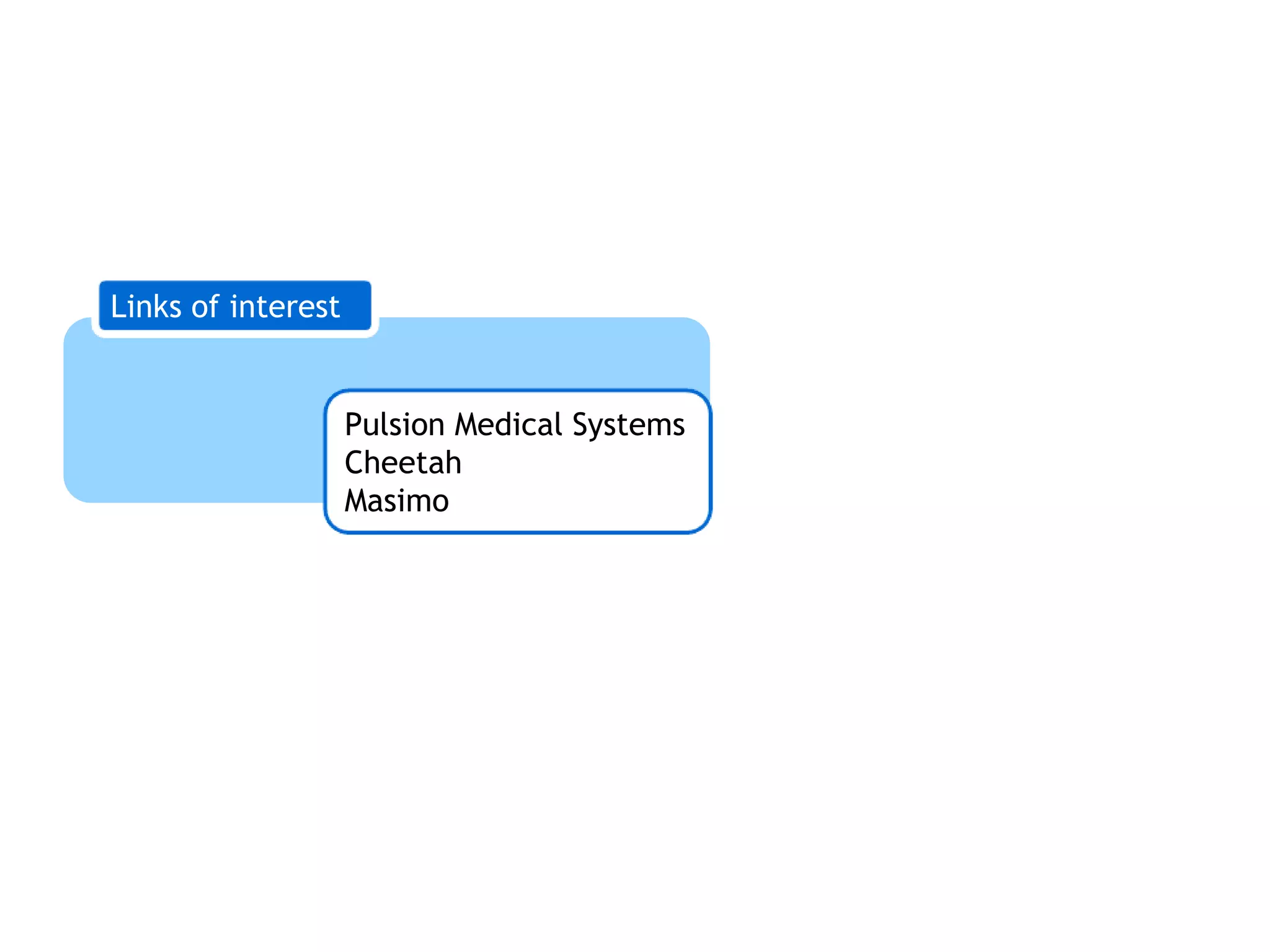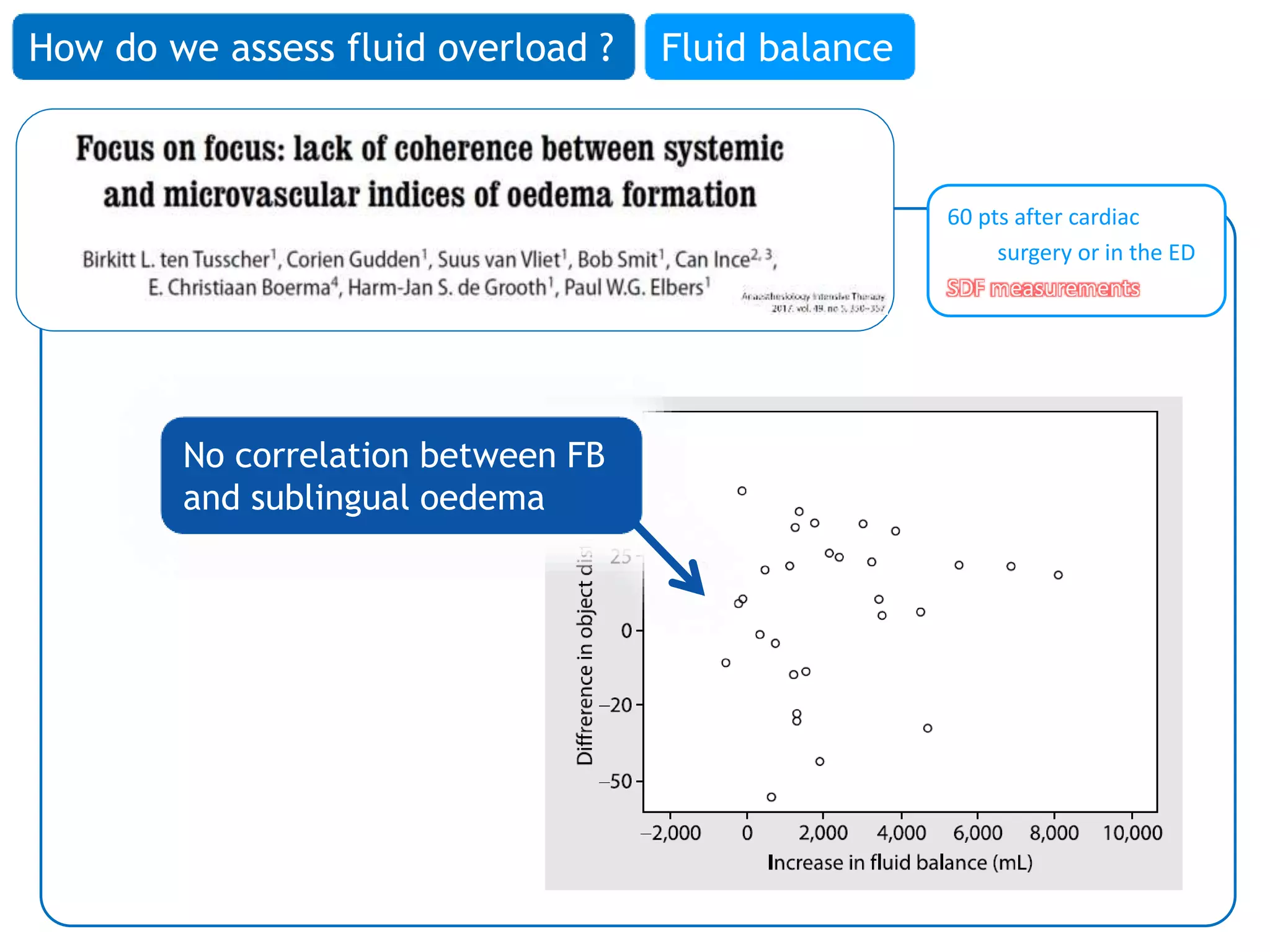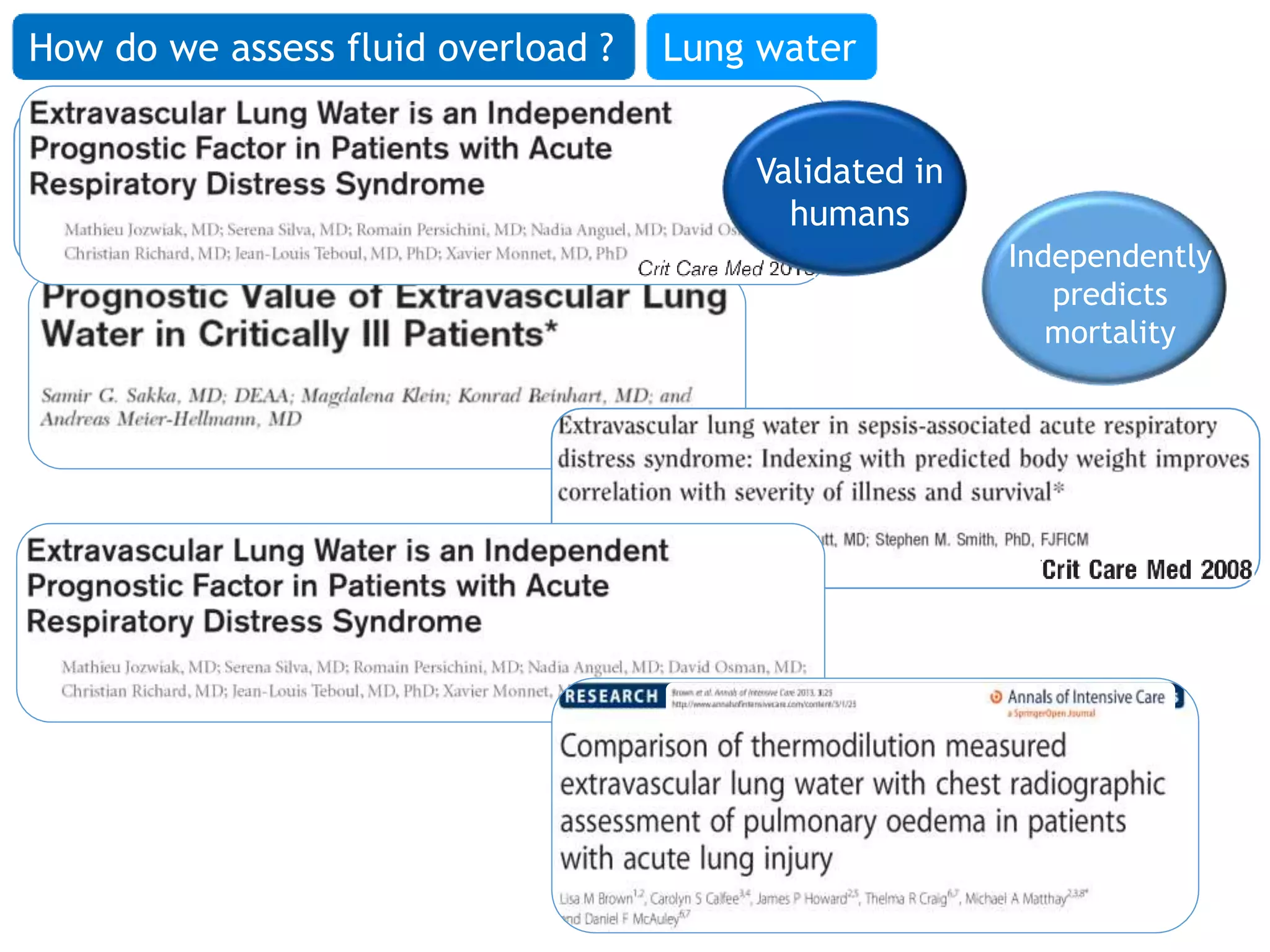This document discusses various methods for assessing fluid overload in patients. Fluid balance (the difference between fluid intake and output) is strongly associated with outcomes like mortality in patients with sepsis or ARDS. Monitoring extravascular lung water, which can be estimated noninvasively using transpulmonary thermodilution, may help guide fluid management and is associated with improved outcomes. While central venous pressure is not a direct marker of pulmonary risk, maintaining an adequate mean arterial pressure and renal perfusion pressure is important to prevent organ dysfunction. Assessing fluid responsiveness with tests like passive leg raise can help determine how much fluid can safely be removed.






![173 patients with
sepsis
Multivariate analysis
Positive fluid balance:
OR=1.014 [1.008–1.021] per ml/kg increase
p <0.001
Fluid balance associated
with mortality during sepsis
How do we assess fluid overload ? Fluid balance](https://image.slidesharecdn.com/fluidoverloaddubai042018-180409215108/75/Assessment-of-fluid-overload-7-2048.jpg)













![10
15
EVLWi
(mL/kg)
Before After 1h 2h 4h 6h
*
*
Bronchoalv.
lavage
28 BALs
EVLW measured by
PiCCO device
+ 130 [100-160] mL
… only!
Detects
small changes
How do we assess fluid overload ? Lung water](https://image.slidesharecdn.com/fluidoverloaddubai042018-180409215108/75/Assessment-of-fluid-overload-21-2048.jpg)















